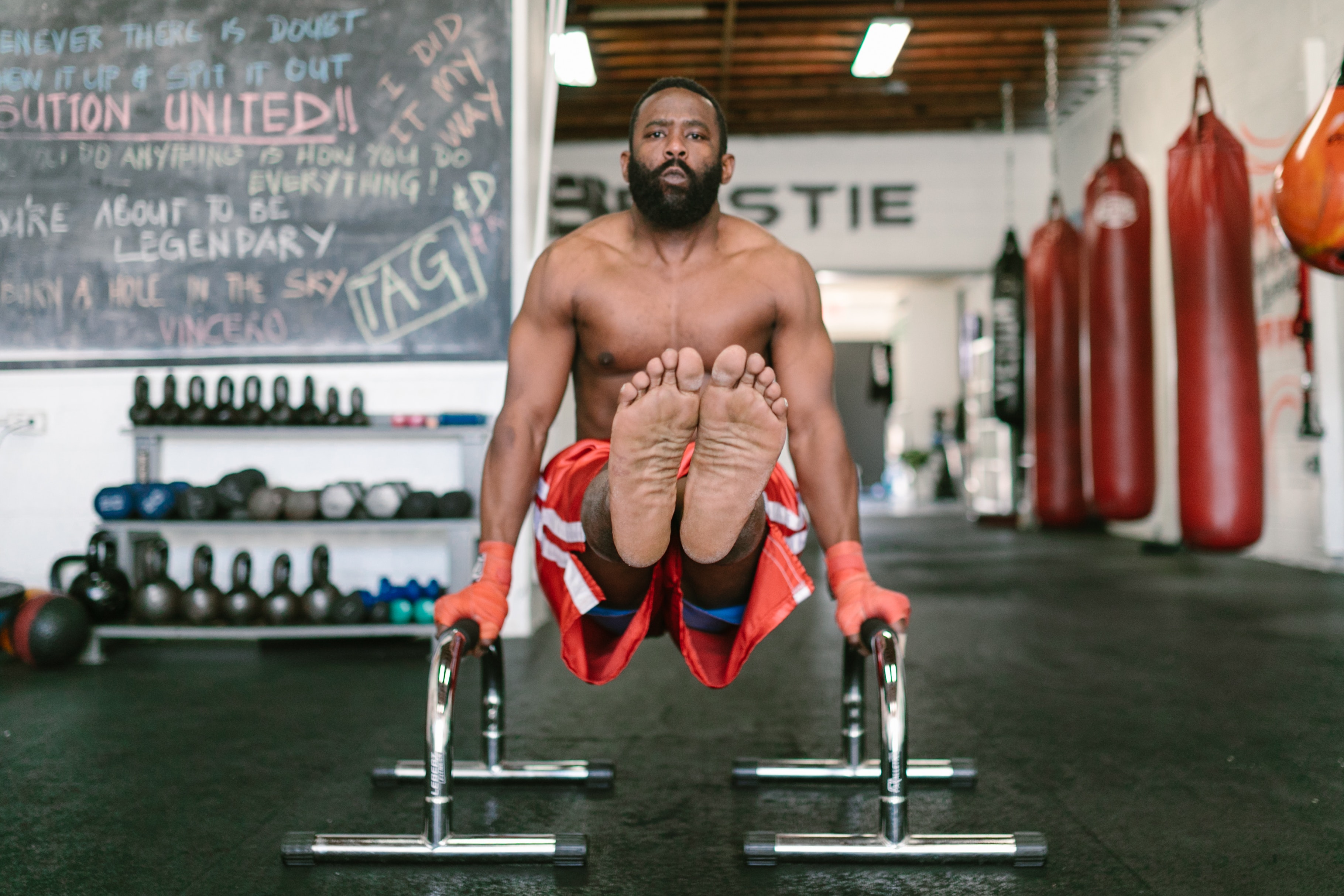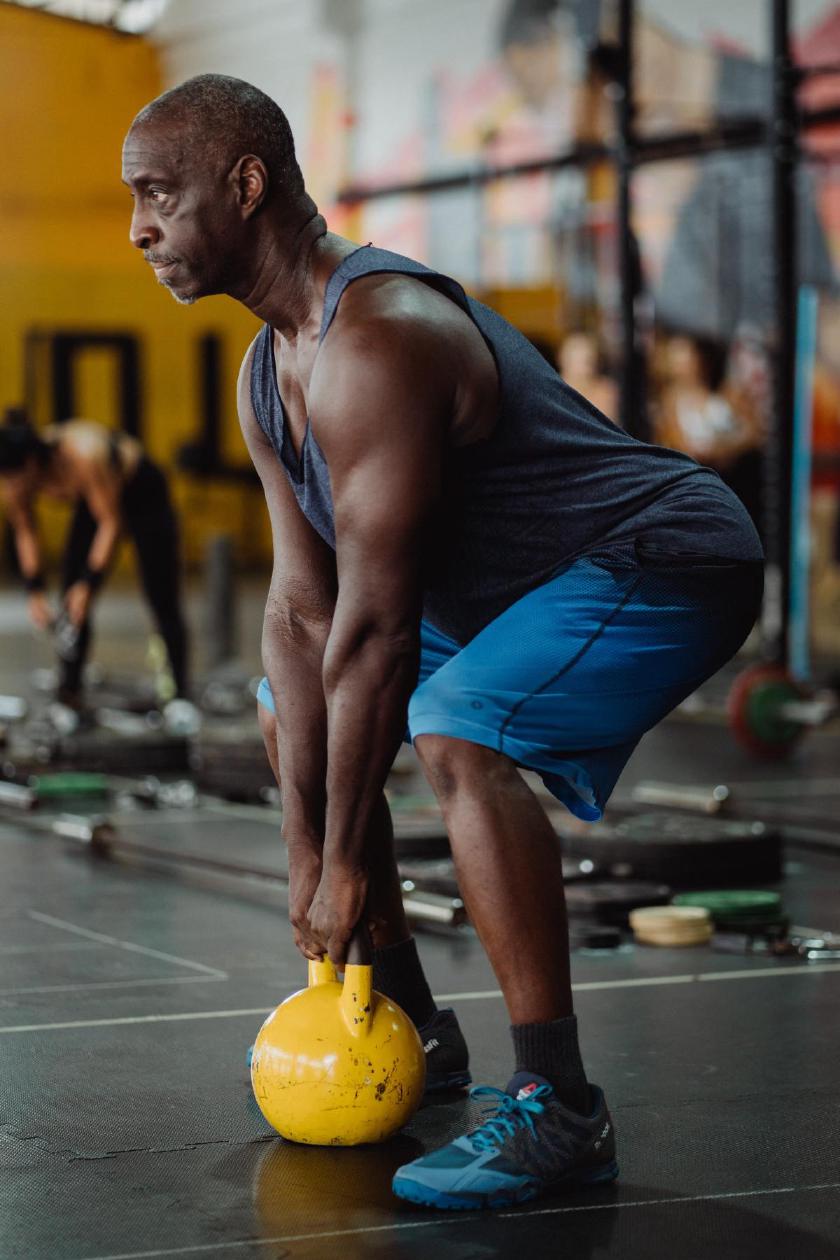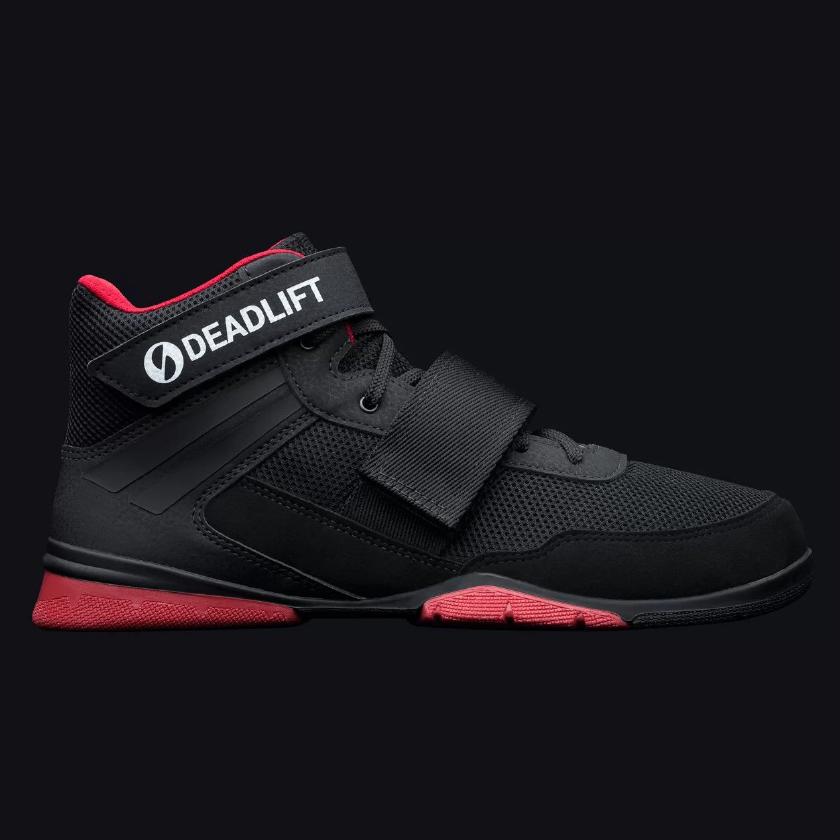The complete guide to vegan weightlifting shoes
When you next stand over the barbell, ready to pull a deadlift PB, take a look down. No, not at the chalky barbell… at your shoes. What are you wearing?
Don’t worry, we haven’t suddenly turned into fashionistas here at Athlegan – we are simply pointing out that those cool running shoes with the killer aesthetics and ultra-soft cushioning are probably not helping you as you lift. Quite the contrary!
In this article we take a look at the differences between various types of lifting shoes and what you should look out for. We also dive into the world of vegan workout shoes to consider, and speak to an expert on vegan gym shoes from the excellent Sabosports.
Do I need specific lifting shoes?
Let’s say you are friends with two doctors – one a doctor of cardiology and the other a doctor of palaeontology. If you develop a heart condition, who would you want to be treated by – the heart specialist or the dinosaur guy?
This little analogy shows that, even though two things are the same in name, they do not deliver the same results. This is the case with footwear.
There are many types of training shoes, all varying in their design and materials. Take the everyday running shoes (aka, the sneaker). These are perfect for long-distance running, as they are soft, flexible and springy.
Running in a pair of running shoes is ideal, but step up to the squat rack ready for a heavy session with those shoes still on and you are asking for problems.

When strength training, stability is our friend, and shoes are crucial at providing this stability. Ultimately, they are the link between your feet and the ground, and a firm and stable base will allow you to transfer force into your lifts.
Running shoes are specifically designed to provide cushioning to absorb impact while running. This may make them great for running, but this cushioning is precisely what makes them so bad for lifting. Cushioning makes the shoe less stable and also less effective at transferring force into your lifts.
Imagine standing over a loaded barbell, ready to perform a heavy deadlift. Now imagine you are actually standing on a trampoline. As you brace and push through your feet to lift the barbell, all the force you generate would be wasted in moving the trampoline downwards instead of the barbell upwards. You would sink down and the barbell would stay in the same position.
This is kind of what you are doing when you lift in running shoes.
The Next Step
Now we know that our old pair of Nike Air Max aren’t suitable for lifting, the question turns to what should we wear instead?
There are three popular options: barefoot/shoeless, Chuck Taylors, and specialized vegan weightlifting shoes.
All three will give you a firm surface that will not compress under heavy loads, which means greater stability for you and better power transfer. In other words, there is no soft middleman stealing your force – the power you generate goes straight into the bar/ground.
Of the three options, there is no right or wrong, and it will come down to personal preference and what you can afford.

The cheapest of the three is obviously to just go without shoes. Shoeless lifting tends to work quite well as there is nothing but your foot and the floor.
However, some people prefer a slight heel for squatting movements, and lifting shoeless will not give you this elevation. Shoes will also compress your feet to increase stability, while the rubber soles will help generate more friction.
With this in mind, this is why some lifters prefer to opt for a minimalist pair of shoes, such as Chuck Taylors (aka, Converse). These relatively cheap shoes provide a flat, firm and stable surface, while they are versatile enough to wear to the bar later that day (you know, when you are bragging about your new deadlift PB).
The issue with Chuck Taylors is that – like shoeless lifting – you don’t tend to have a heel on these shoes. So, they will be good for deadlifts, but for many people they are not ideal for squatting.
Furthermore, while better than the disconnect you would have with a pair of runners, Chuck Taylors still create a disconnect between the lifter and the floor. For more on this, we spoke to Sergey Ponomarev from Sabosports – a shoe brand offering an entirely vegan range of lifting shoes.
Sergey explained to us, “Classic Converse Chucks were created as a tennis/basketball shoe – and they are good for use as a training shoe. However, the outsole is thick and made of rubber. Because of this, the athlete can’t find optimum stability; the foot is floating. The brain and the body have to spend a lot of energy finding a balance.”

This brings us to the final step in the progression – a pair of specialised vegan lifting shoes, for weightlifting, powerlifting, or similar strength sports.
As the name suggests, weightlifting shoes are designed for stability and to support great force without any compression. They usually also feature straps that help reduce lateral movement and lock in the foot, adding to the stability during your heaviest lifts.
Perhaps the biggest difference between weightlifting shoes and other training shoes is that lifting shoes often have elevated heels. This can help individuals achieve a better range of motion to allow for a deeper squat while maintaining an upright position. More on this below.
Ultimately, lifting shoes are worth buying if you have aspirations of pushing yourself to greater heights - whether your goals are in strength or physique. You may not need specialist shoes if your gym life ends at the pec dec, but if lifting is something you will do for years to come, then lifting shoes should be a serious consideration.
Things to consider when buying weightlifting shoes
Sold on the idea of weightlifting shoes? Before you throw away your old trainers and buy the first pair of lifting shoes you see, there are a few considerations to make. Let’s go through some of them now.
Vegan vs. non-vegan
Vegan living extends beyond our diet and into everything we buy, from cosmetics to clothes to – you guessed it – shoes. Thankfully, there are many vegan options in the lifting shoe market.
Many vegan athletic shoes come with a clear label, to signify that they are free from animal products. Some brands – like our friends at Sabosports – go a step further and offer an entirely vegan range.
But very often, many shoes aren’t specifically labelled vegan, so you have to do some homework.
Firstly, look for synthetic materials. Synthetic materials actually tend to provide the best experience when it comes to training shoes (i.e., running shoes, CrossFit shoes or any other athletic trainer), due to their flexibility and breathability. However, due to tradition, leather is the most often-used material used for weightlifting shoes, and therefore many are not vegan.
The first thing you should do is to read product descriptions to check for leather – even if leather is not the main material, there may be small amounts in the build. Obviously, avoid these shoes.
If the shoe is leather-free, it may still not be vegan, as the synthetic materials may contain parts derived from animals. For example, some glues can be derived from animal bones, while some colour dyes may come from animals.
Luckily, some retailers offer a vegan search filter on their websites, so use this if the option is there. It will filter out non-vegan items, allowing you to shop safely.
If buying in store, do some research online first, as it is easier to find information on materials used in the production process and combat the lack of knowledge that some shoe store assistants will have on vegan apparel.
Of course, be sure to check with the manufacturer before purchasing, as materials may vary across regions.
Heel height
When you have found a vegan lifting shoe, your search isn’t over – now you need to look at the details of the shoe, starting with the height of its heel.
Heels are there for a reason. They have the benefit of allowing you to go deeper in the squat while maintaining an upright posture.
The heel size you choose will largely depend on factors including your height, your squat stance, and whether you perform a high or low-bar squat.
If you are serious about powerlifting, speaking with a personal trainer or coach about heels will help you determine the best heel height for you. If you want to take a gamble, a depth of around 0.75” tends to help most lifters in the squat.
While 0.75” is standard, heel heights vary between brands and shoes. There is no one-size-fits-all approach and the heel height you go for will depend on things such as your height, the length of your femur, and what you are focusing on in the gym.
Heel heights can be complicated. However, in a nutshell, different lifting activities tend to require different heel heights.
For example, flat shoes with no heel are ideal for deadlifts, whereas a taller heel is perfect for squatting. A slight heel is a compromise and will work for the general weightlifter who is not trying to specialise in any one lift.
Still, the following guidelines will give you a starting point:
Deadlift: 0 inches
Squat: 0-0.75 inches
Snatch/Clean & Jerk: 0.75+ inches
General: 0-0.75 inches
Heel height is very subjective and what feels good for us may not feel good for you. Use this list to determine where to start, then try some pairs to feel what works best.
Heel materials
While heels were traditionally made from wood, newer shoes use synthetic materials such as plastic. There is a difference between the two, which Sergey from Sabosports explains.
“Adding a wooden heel originally seemed like a good idea for marketing shoes, but these days we have artificial materials that work much better than wood,” he told us.
“Wood can be temperamental. It can dry out or absorb moisture. This can result in a serious issue if you wear or store your shoes in cold or wet conditions for long periods of time.”
Shoe straps
You may have noticed that some lifting shoes feature big Velcro straps, while others don’t. Others will have one strap, while others have two. What’s the difference?
As we mentioned above, straps are there for additional support and stability, and whether or not you need straps will come down to your activity and personal preference. Straps offer that desired “locked in” feel and, naturally, two straps will offer even more support than one.
As Sergey explained, “Many years ago, we found out that laces alone didn’t give a good enough hold of the foot. All the athletes we worked with confirmed that straps add a feeling of stability.”
“Sometimes the athlete needs a lighter hold and sometimes they need a stronger hold. For a serious competition, for several seconds of heavy lifting, you may need an extremely tight hold. But some people will wear their shoes all day and need something more comfortable. So, we realised that some people need shoes with straps and others need shoes with no straps at all.”
As for the question of one vs. two straps, two straps are naturally going to provide even more stability.
However, double the straps can reduce the flexibility of the shoe. When deadlifting, this may not be an issue, but when Olympic weightlifting is the activity, then athletes need flexibility in the toe area. This is why many classic weightlifting shoes feature just one strap.
Price
The price of weightlifting shoes can vary greatly between brands and models. Thankfully, you will be able to find a shoe at pretty much every price point - from budget to premium.
There is no right answer here. However, you will find that the more expensive the shoe, the better the quality of materials and manufacturing tends to be. This usually leads to a shoe that both performs better and lasts considerably longer.
Design
We have talked about the design of weightlifting shoes throughout this article, but here we are focusing specifically on the aesthetics of the shoes.
Naturally, this is entirely subjective - one person’s perfect shoe may be another person’s fashion nightmare. Luckily, there are many styles to choose from.
For example, some lifting shoes are very blatantly lifting shoes - style is sacrificed for stability. They look fine when worn on the deadlift platform, but worn away from the gym they may look a bit strange.
Other brands offer sleeker and more stylish designs that actually look like sneakers, while still offering the stability and support you require.
What happens if you train in many disciplines?
On that note, how should you go about buying shoes if you train in multiple disciplines? We put this question to Sergey.
He told us, “How to choose is not an easy question. The best solution is to try several shoes to discover your favourite. Because of your individual body, training style and other factors, different athletes will feel better in different shoes.”
In an ideal world, our gym bag would be full of shoes; each tailored to the lift we are about to perform. However, most people cannot afford a bag full of shoes. Others will be performing several disciplines without the ability to change shoes in between - for example, during a CrossFit WOD, where you may be running, climbing, and snatching in quick succession.
This is where hybrid shoes / CrossFit shoes are worthy choices. These shoes are a jack of all trades, but give you enough comfort to run and jump, along with enough stability to lift heavy.
Conclusion
Ultimately, what lifting shoe you choose will come down to a lot of different factors. If you visit your gym once a week to lift weights to keep fit, you can probably just wear a pair of Chuck Taylors or off the shelf vegan CrossFit shoes.
If you are a passionate lifter, then you are likely to need a more specialised pair of shoes – possibly even multiple shoes to suit multiple activities (i.e., squats and deadlifts).
Just keep in mind these words from venerable strength trainer Louie Simmons:
“Don’t have a 10 cent squat with $100 shoes.”
Even a great pair of lifters won’t fix a weak squat. Our online coaching does! ;)









